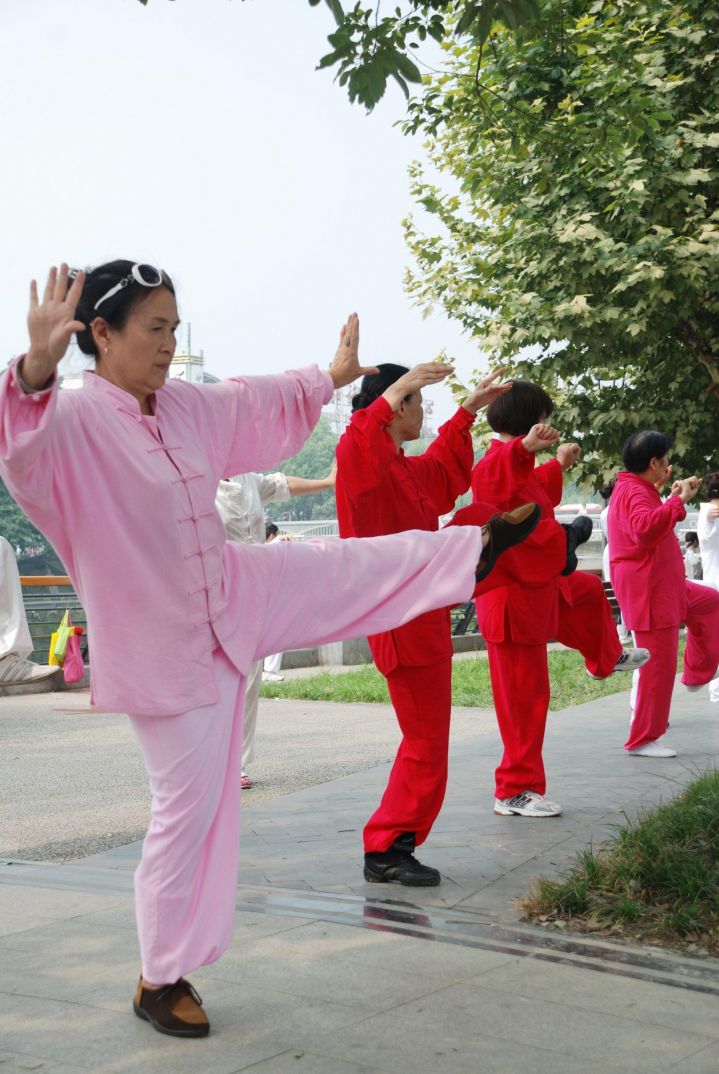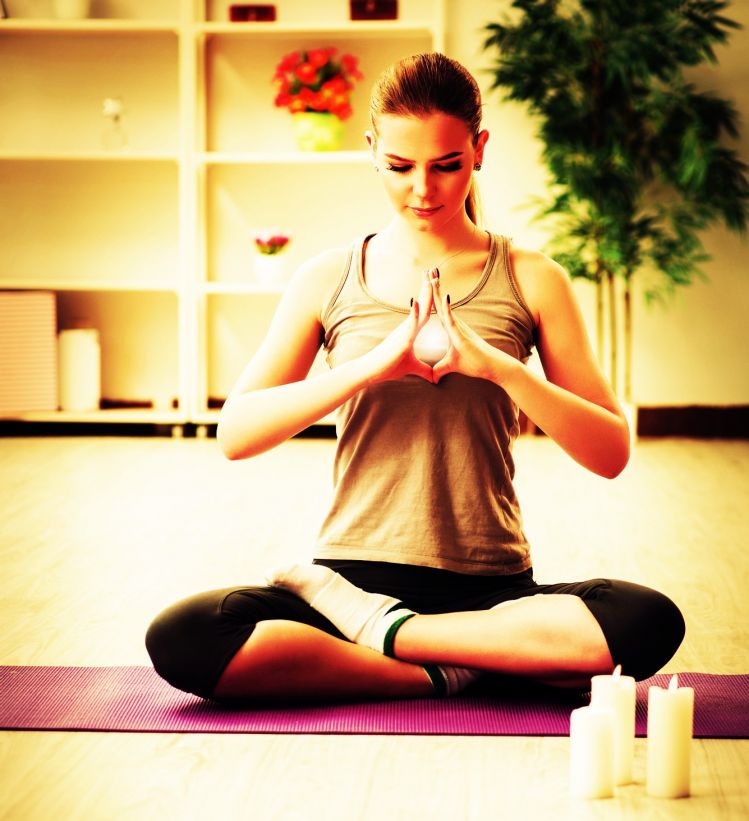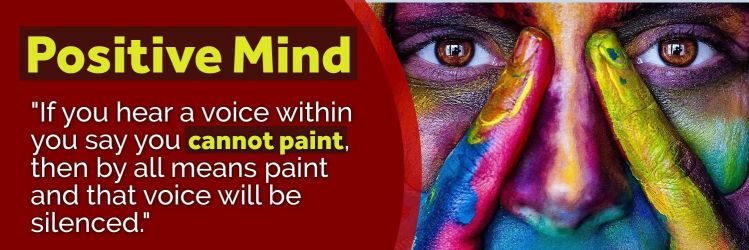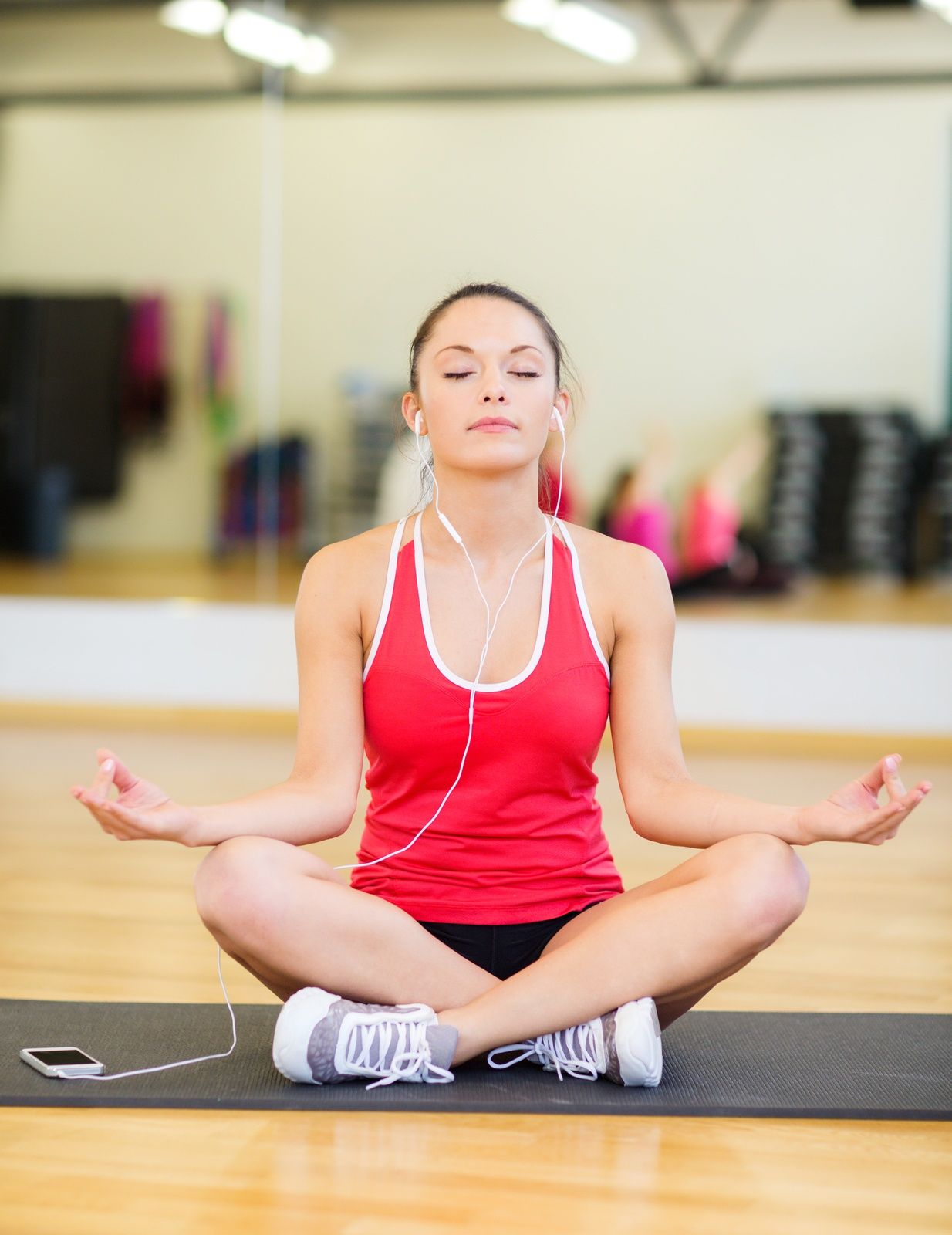Is There a Difference Between Mindfulness and Meditation?
Lesson 4
More Mindfulness Questions Answered
As we begin a mindfulness practice, questions often arise. Beginning mindfulness practitioners frequently ask similar questions, so we thought we will answer a few of them for you.

How is mindfulness different from meditation?
The difference between mindfulness and meditation is primarily one of focus. Mindfulness brings your attention to what you’re doing in the present moment. It’s about being aware of everything in your environment – so its focus is external.
Mediation focuses on the inner self. When you’re meditating, you go deep within to find stillness and calm – your focus is internal. Mindfulness and meditation are related but not the same, although a mindful approach is a crucial element of meditating. Being mindful helps calm the mind and reduce stress levels and can enhance your meditation practice.
How do I stay motivated?

Like any new habit, you might find your motivation slipping after your initial enthusiasm. The key here is to be kind to yourself, to cut yourself some slack, and if you fall off the wagon, to get back on.
Try changing your routine, focus on everyday mindfulness for a day or two or see if a mindfulness app can help your motivation levels. If you can see you’re making progress, you’re more likely to stick to your practice.
Aren’t Tai Chi and yoga the same as mindfulness?

Techniques like Tai Chi, yoga, and other body-mind activity can be great mindful activities and can help support your practice, but they are not the same as mindfulness. Just like with any other activity, you can perform them mindfully or not.
You could go through a whole Tai Chi routine while thinking about other things, which isn’t mindful. So although those two types of moving meditation were designed to bring awareness to body, mind, and movement, you still need to get your mind to the current moment, over and over again, to make them a part of your mindfulness practice.
How will I know when or if I’m doing it right?
Part of developing a mindful approach to life is resisting the tendency to judge or evaluate your practice. There are no mindfulness auditors. No one will know or judge you for allowing your mind to wander. What counts is remembering to keep gently and kindly returning to your practise by observing and bringing your attention back to your breath.
Keep doing your best, taking opportunities to be mindful during your day and don’t worry about quantifying how excellent or bad your mindfulness is. There is no right or wrong in mindfulness; there is just the present moment as it is.

You’ve probably heard a lot recently about mindfulness. The concept of mindfulness as a regular practice is popping up everywhere in self-help books, yoga and lifestyle magazines, and online courses as a way of living a better, healthier life. You may also have noticed that people tend to use the terms ‘mindfulness’ and ‘meditation’ pretty much interchangeably.
And they are complementary and, in some ways, overlapping. Mindfulness can pave the way for meditation practice and is an essential element of meditation. Both approaches are fundamental techniques to develop your inner life, reduce stress, and become calmer. But there’s a big difference between the two, and it’s a difference grounded in focus.
You might think of mindfulness as the opposite of multitasking. Doing something mindfully, whether it’s hiking your favourite mountain trail, driving your car or doing the dishes, means focusing your attention on every aspect of what you’re doing. It’s easy to let your mind drift when you’re doing an ordinary task and suddenly ‘come back.’
Mindfulness stops and notices what’s going on around you while you are doing. It’s externally focused. You are mindfully walking means being aware of every step, how the ground feels under your foot, the smell and temperature of the air, the sounds of birdsong or wind in the treetops, how your body feels as you move through space. Mindfulness means being fully engaged with your senses and how they are interacting with the world.
Mindfully living means giving your full attention to the person, situation, or task in front of you right now. It keeps you firmly grounded in the present moment.
If you are living mindfully, your mind can’t stay stuck on past hurts, grievances, or events, and it can’t project worrisomely into the future because your full attention is taken up by the present. Life slows down and becomes more thoughtful, less reactive, calmer.

On the other hand, meditation takes a mindful approach and turns your attention inward. Meditation is the practice of finding peace within. It is a more formal process than mindfulness and requires a physical and mental separation from what’s going on around you. You close your eyes and perhaps recite a mantra to block out external stimuli.
When you meditate, you withdraw your attention from the outside world and focus on your inner world. You create a quiet space to detach and let your mind and body relax.
Developing a meditation practice allows you to notice and observe your thoughts and feelings, thereby increasing your self-knowledge.
Mindfulness and meditation are different but complementary practices that will help you create a happy, more relaxed life.
Common Mindfulness Questions Answered
Mindfulness is a hot topic right now and for a good reason. Mindfulness has been shown to have a range of benefits and can improve your physical, mental and emotional health. Whether you want to practice mindfulness to help you deal better with stress or to help you live a more positive life, you’re likely to have lots of questions.
Here are some answers to the most common questions people have about mindfulness.
How do I do it?
The short answer is that you can practice mindfulness and meditation in the way that suits you best. Some people enjoy traditional meditation, sitting in silence on a cushion. Other people use guided meditations on their smartphones or computers. It’s important to integrate mindfulness into your everyday activities, taking the time be genuinely aware of the present moment. You can even practice mindful walking. The best way to practice mindfulness is the way that feels right to you.
How do I breathe properly?
You may feel like you should force your breath into some pattern or control it in some way, such as trying to slow it down.
But that’s not necessary. It’s best just to feel and experience your breath. As you begin to relax, your breathing will naturally slow down and regulate on its own. Try not to judge yourself for not doing it ‘right.’ Don’t try to control or channel your breath, just keep observing and allowing.
Simply let the breath, breathe you.

How do I stop my mind wandering?
If you find a way, let me know! It’s natural for your mind to wander or be distracted. Our mind thinks. That’s just what it does. Even highly-experienced mindfulness practitioners have wandering minds! Everyone does!
Most of us spend our days worrying about the future or brooding over the past. We don’t often stay in the present, but it is the way to inner peace and calm.
Be kind to yourself and don’t judge your mind for falling back into familiar patterns of thinking. Bring your attention back to the present and use your breath to keep bringing your attention back to focus on the here and now.

How do I find the time for mindfulness?
This one’s easy! You don’t have to set aside special time to bring mindfulness into your life. In fact, you can enhance your formal meditation time by integrating mindfulness practice wherever you are.
You can use these prompts throughout the day to return your attention to the present moment and take some deep conscious breaths:
1. In the shower
2. During your daily commute
3. Waiting in line, or for an elevator, or for a meeting to start
4. Before you start your car
5. While you’re booting up your computer or opening your inbox
6. While you’re waiting for your coffee
7. Before answering the phone
Take advantage of all these ‘lost moments’ in your day to turn them into mindful moments!
Debunking five mindfulness myths
You’ve probably noticed there’s a lot of discussions right now about mindfulness in magazines and across social media. Mindfulness and its partner mediation have been shown to have a wide range of social and health benefits. But there are also a lot of mindfulness myths that are worth detangling.
Here are some of the most prevalent mindfulness myths.
Mindfulness is just for meditation
Mindfulness can be practised everywhere and at any time. It is simply turning the mind’s attention to what is happening in the present moment, whether you’re walking along the street, preparing a meal, or sitting on your cushion practising meditation. Mindfulness is quieting the chatter in your mind, bringing your attention back to the experience of living in the moment, its sounds, sights, smells, and feelings.

Mindfulness is easy
Mindfulness is a simple concept, but that doesn’t mean it’s easy! We are so focused on getting things done, being available 24/7 and keeping track of our busy lives. Actively choosing to slow things down and simplify your life can be quite a challenge.
Sometimes mindfulness is easy, sometimes it’s not, depending on what is going on in your life. But like any exercise or practice, the more you do it, the easier it becomes.
Mindfulness conflicts with certain religions
Although the concept of mindfulness derives from Buddhist teachings, it is not a religious practice or connected to a particular belief system. These days mindfulness is seen as a useful technique for taking control of your life, reducing stress and building resilience.
Mindfulness is passive
Mindfulness is more than positive thinking and can be far from passive. Mindfulness is actively engaging in the present moment.
As well as leading to significant calmness, it can be a useful way of problem-solving. When your mind is calm and focused, it is much better at coming up with considered and innovative solutions to problems.

Mindfulness is always joyous
Just as life is not always joyous, neither is mindfulness. If your present moment includes arguing with your children, being in pain, or dealing with other stressful situations, focusing on that moment will not be pleasant.
While mindfulness will not turn you into a Pollyanna or ensure that all your life events are full of joy, it can help you deal with whatever is in front of you right now.
When you’re attuned to mindfulness, you are less likely to bring the wounds of the past and the anxieties of the future to reacting to what is happening in the present moment.
So, you’re less likely to over-react or be triggered, because you are more in control of how you respond to pain or conflict.

There are lots of techniques and supports out there to help you get into the mindfulness habit. Every day there are more and more mindfulness apps for your smartphone or tablet to help you deal with anxiety, sleep, and stress issues.
Here are some of the most popular and easy to use mindfulness apps that are suitable for Android and iOS. Oh, and they’re free!
Insight Timer has more than 4,000 guided meditation from over 1,000 teachers as well as podcasts, talks and ambient music. Insight Timer has a community focus, telling you how many people are meditating with you and where. You can create a meditation library of your own, and Insight Timer will make suggestions based on your choices. A favourite for long-time mindfulness and meditation practitioners!
Aura sends you a daily, new personalized three-minute meditation. It will ask your age, and how stressed, optimistic and interested in mindfulness you’re feeling, and then Aura will send you an appropriate mediation. You can save meditations to your library.
Aura also has relaxing sounds and a Mindful Breather feature where you can synchronize your breath to an animated circle which expands and contracts. The home screen also encourages you to note down something you’re currently grateful for – a great mindfulness practice!
Omvana has thousands of meditations, inspirational speeches and binaural tracks, most of which are free! There are meditations for focus, sleep, peace, enlightenment, positive living, and relaxation. You can add favourite tracks to your library or pay to upgrade to get access to even more meditations.
If you’re new to mindfulness and meditation and are not sure where to start, Stop, Breathe & Think could be just what you need! There is a section called Learn to Meditate that takes you through the process and rationale for mindfulness and what to expect when you start.
There are nearly 30 free sessions of up to 11 minutes with themes like Connect with Your Body, Be Kind and Breathe. Or you can set a meditation time and listen to relaxing sounds or simply sit in silence. You can track your progress and earn stickers to reward you for building your practice.
Even calm’s webpage makes you feel calm!
The Calm app has meditation sessions ranging from three to thirty minutes focused on helping you relax, sleep better, reduce stress and improve your relationships.
There are even ‘sleep stories’ which are bedtime stories for adults!
There are also timers for silent meditations or meditations with intermittent bells.






